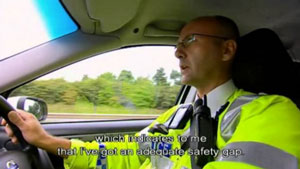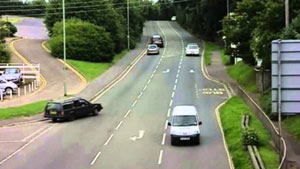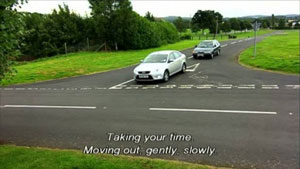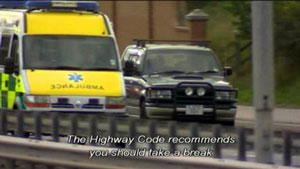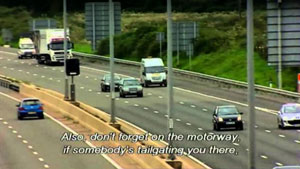Safe Driving Tips
Driving regularly, as long as you are fit and safe to do so, will help you to maintain your driving ability. The following tips may help. If you have difficulty with any of these issues, consider taking a driver assessment or some refresher driver training.
Fitness to Drive
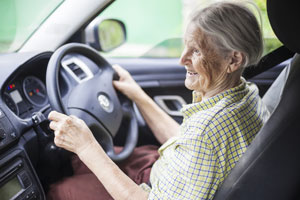
Although experienced drivers are generally safer and better than less experienced ones, our driving ability changes as we get older. We are all personally responsible for making sure that we do not drive when we are not fit to do so, and that we report any condition that affects our ability to drive safely to the DVLA (or the DVA in Northern Ireland). It's also important to have regular eyesight tests.
The advice in other parts of this website will help you recognise and adapt to any changes to your fitness to drive.
Safe Car
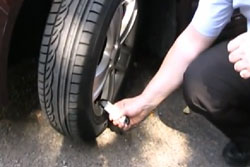
Your car must be in a safe and legal condition. It must be properly taxed, have a valid MOT (unless it is under three years old) and should be serviced regularly. You must be insured to drive it.
The Your Car section of this website gives advice on how to do simple, regular safety checks, and suggests things to consider if you are choosing a new car or your thinking about car adaptations.
Don't forget to carry out regular safety checks on your car. Any loads or luggage should be securely restrained in the boot and loose items should not be left on the seats or dashboard as they would be thrown about if you have to brake sharply or have a collision.
If you tow a trailer or caravan, make sure that your driving licence entitles you to do so. Towing a Trailer outlines the rules.
Plan Journeys
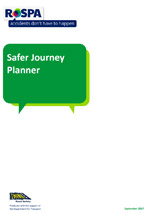
It's helpful to plan journeys, especially long ones or when you're going to an unfamiliar area.
Try to avoid driving at night, if you find it more difficult to see in the dark, and try to avoid the busiest times of the day, if possible. If you find particular junctions and roundabouts difficult on a route you often use, see if you can change your route to use traffic light junctions instead.
We are most likely to feel sleepy in the early hours of the morning and mid afternoon, so if possible avoid driving (especially long journeys) at these times, or when you are feeling tired. There's also a higher risk of falling asleep at the wheel on long, monotonous journeys on motorways and dual carriageways.
Safer Journey Planner gives useful tips on avoiding driver fatigue.
Work out your route in advance, but don't look at a map or directions while driving. Ask a passenger to give you directions or stop somewhere safe if you need to check them.
Using a SatNav can be very helpful, but make sure you set the destination before you start, and don't automatically follow its instructions as its map may be out of date. Make sure you know your route , even if you are using a SatNav, and comply with road signs and markings.
Check traffic and weather reports before you set off and be prepared to postpone your journey in very poor conditions. If you do need to drive in difficult weather conditions, these Winter Driving Tips will help you prepare. If the weather is very hot, keep a bottle of water in the car.
Seat Belts and Child Seats
Always make sure that you and your passengers wear their seat belts on every journey. Children must be carried in a child car seat that is suitable for them and securely fitted in the vehicle. Advice on child car seats is available here.
Distractions
Safe driving requires concentration, so avoid unnecessary distractions, such as using a hand-held or hands-free mobile phone, smoking or eating when driving. Plan rest breaks where you can check messages and have a snack.
If you carry pets in your car, remember to restrain them properly. An unrestrained cat, dog or other pet can distract the driver and could cause serious injury to themselves and others in a car crash. "Carrying Pets Safely" gives advice on how you can keep your pet and others safe in the car.
Observation
Good, all-round, observation is a key safe driving skill. As well as looking ahead, check your rearview and wing mirrors regularly. Be particularly careful to check for pedestrians, pedal cyclists and motorcyclists. You need to be able to turn your head left and right and to be able to look over your shoulder. If you find this difficult, consider whether any specialist adaptations or accessories would help. See Vehicle Adaptations for further information.
Anticipation
Being able to anticipate what other road users are about to do (for example, pull out of a junction, change lanes, a pedestrian stepping into the road) is also a key skill. It requires good observation and taking note of vehicle indicators or riders' arm signals, as well as road signs and markings, and the road position of other vehicles. Of course, someone may change position without indicating, so be prepared for that.
Signals
Give signals in good time to indicate what you intend to do rather than what you have already done. Use your mirrors and check all around to check it is safe before giving a signal and starting your manoeuvre.
Speed
Drivers who travel at higher speeds have less time to identify and react to what is happening around them, and it takes them longer to stop. If there is a crash, it is more severe, causing greater injury to the occupants and any pedestrian or rider they hit. Drive at a safe speed for the conditions, and always stay within the speed limit.
Many drivers unintentionally exceed the speed limit, often without realising it, because modern cars are so powerful and comfortable they give little sensation of their speed. If you find it difficult to stay within speed limits, these simple tips may help.
Driving too slowly (well below the speed limit in free flowing conditions) can cause frustration for other drivers, who may tailgate you or overtake when it's not safe. If you find yourself in this situation, find somewhere safe to pull over and let other traffic pass. On roads with two or more lanes, use the inside lane.
Of course, if traffic conditions require it, travelling below the speed limit is the right thing to do.
Space
Leave enough space between you and the vehicle in front so you can stop safely if it suddenly slows down or stops. In normal conditions leave a two second gap between you and the vehicle in front, but at least double this is on wet roads and increase it even more in icy conditions.
On dual carriageways and motorways, keep to the nearside lane in normal circumstances, except when overtaking or the lane is for turning traffic or you are going a different way from the nearside lane. When you do use an outside lane, avoid "lane hogging" and return to the nearside lane as soon as it is safe to do so.
Junctions
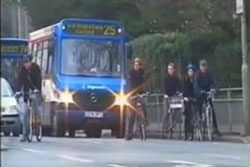
If you find particular junctions and roundabouts difficult on a route you use often, try to find a route that use traffic light junctions instead.
Identify junctions early and reduce your speed as you approach. When waiting to turn into a junction or driveway, keep your wheels pointing straight ahead. This way if you are hit from behind, your car will be pushed forward, rather than into the path of other traffic, which might happen if your front wheels are turned in the direction you are taking.
Signs and marking
Road signs and markings provide essential information. Make sure you are up to date with them by reading the latest version of the Highway Code. You also need to be able to read and understand the information on the signs; if you find this difficult, consider taking an eye test or speak to your doctor.
Vulnerable road users
All drivers need to be especially aware of vulnerable road users (pedestrians, pedal cyclists, motorcyclists, horse riders, children) as they can be seriously injured, even in a minor collision. They key things are to keep a good look out for them, watch your speed and give them time and space.
For further advice see "Sharing the Road Together: Drivers and Cyclists".
Safe Driving Films
The following films produced by the Older Drivers Forum give useful advice on safe driving.


